
by A Touch of Dutch Landscaping | Apr 27, 2020 | Gardening, Hardscaping, Lawn care, Maintenance, Softscaping, Spring Clean-Up, Walkways
Episode 1 – Edging
In this series, we’re sharing fundamental DIY tips for preparing your lawn and garden for the upcoming season. Here, Johan discusses when, why and how to edge around your softscaping and hardscaping.

by A Touch of Dutch Landscaping | Mar 29, 2020 | Flowers, Gardening, Native Plants, Shrubs, Softscaping, Trees
Creating a healthy local ecosystem in our own backyards
There have been myriad reports over the past few months from backyard birders about the decrease in visitors to their feeders. If you’ve noticed this too, you’ll be pleased to know there are things we can each do to radically reverse the decline of small wildlife in our yards.
 It’s all well and good to provide seed and suet for birds, but the solution to population decline requires us to look a little closer. Instead of thinking short-term, say season by season, let’s look at it from a yearly perspective, or even longer.
It’s all well and good to provide seed and suet for birds, but the solution to population decline requires us to look a little closer. Instead of thinking short-term, say season by season, let’s look at it from a yearly perspective, or even longer.
What we choose to plant directly affects the quantity and activity of small and large living organisms in our yards. If our only priority is a yard that looks pretty, we may be missing opportunities to positively impact the local ecosystem.
We should also consider biodiversity – choosing a variety of species that co-exist nicely. If we also opt for plants and trees that require minimal resources for survival, then we can move toward a landscape that not only looks good, but is low-maintenance and welcomes beneficial interdependent activity above and below ground.
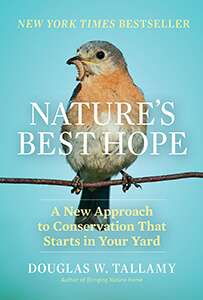 Wildlife Ecologist Doug Tallamy, author of “Nature’s Best Hope: A new approach to conservation that starts in your yard” offers strong arguments and simple tips for being a backyard conservationist. Here are a handful of his suggestions:
Wildlife Ecologist Doug Tallamy, author of “Nature’s Best Hope: A new approach to conservation that starts in your yard” offers strong arguments and simple tips for being a backyard conservationist. Here are a handful of his suggestions:
- Reduce the amount of lawn in your yard to that which you require for walking and playing. Fill this area instead with more productive “host” plants.
- Over thousands of years, native fauna has developed defences and tolerances (and thus, preferences) for consuming native flora (plants with which it has co-evolved), so naturally if we replace these native food sources with non-native alternatives, local wildlife will either have to go elsewhere for food or perish.
- If not kept in check, unproductive, foreign cultivars can become invasive species, choking out native plant life beyond our back yards.
- We currently have 3 billion fewer birds than we did 50 years ago. Globalization and hybridization have replaced native garden options with more “exotic” options that might be fashionable, but don’t contribute to the local ecosystem.
- A great deal of the animals in any ecosystem don’t eat plants, but eat something that eats something that eats plants, so ensuring the right plants are available as a food source for caterpillars and insects is a very big deal to our entire ecosystem.
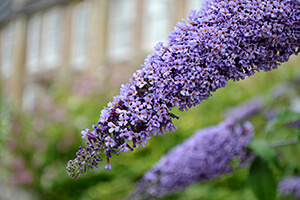 The good news is this isn’t an all-or-nothing proposition. You don’t have to swap out all of the plant life in your garden and risk disrupting your current modern or tropical motif, for example. Plants that are native to Ontario come in a wide range of shapes, sizes, and colours, so you’re sure to find a few cultivars that appeal to you.
The good news is this isn’t an all-or-nothing proposition. You don’t have to swap out all of the plant life in your garden and risk disrupting your current modern or tropical motif, for example. Plants that are native to Ontario come in a wide range of shapes, sizes, and colours, so you’re sure to find a few cultivars that appeal to you.
And adding just a few native plants and trees will produce favourable results. Visit our June 2019 post on Choosing Native Ontario Plants for Your Garden or head over to our Native Ontario Plants Pinterest Board for some inspiration.
As always, if you need assistance choosing the right native plants and trees for your yard, or you just want to get started on a landscaping project, contact us.
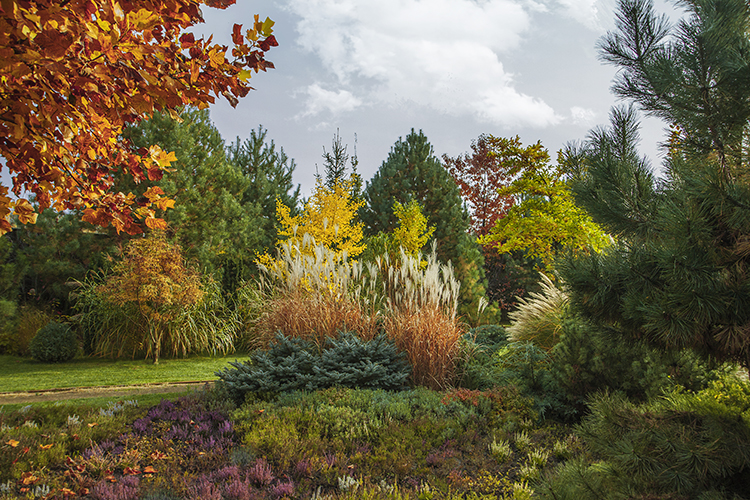
by A Touch of Dutch Landscaping | Sep 28, 2019 | Flowers, Foliage, Gardening, Landscape Design, Shrubs, Trees
Most of us would be hard pressed to find a person who doesn’t love the colours of fall. Yes, winter will inevitably follow fall, and probably earlier than we’d like. But, in the meantime, we’ve still got warm daytime temperatures, cool evenings, and so much colour to enjoy.
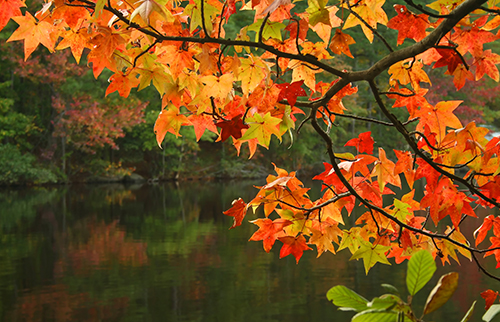 While the trees, plants, and shrubs throughout Southwestern Ontario offer up a lot of colour, many homeowners want colour in their own yards, as well. There are some quick fixes for this – displaying pumpkins, potted mums, and faux leaves and floral décor, for example. However, adding perennial colour to your fall garden takes a bit more forethought.
While the trees, plants, and shrubs throughout Southwestern Ontario offer up a lot of colour, many homeowners want colour in their own yards, as well. There are some quick fixes for this – displaying pumpkins, potted mums, and faux leaves and floral décor, for example. However, adding perennial colour to your fall garden takes a bit more forethought.
When planning gardens, home gardeners generally work in chronological order, considering what’s going to bloom or otherwise be at its peak in spring and then what will be at its best in summer. For this reason, autumn may tend to take a backseat where plant selection is concerned. To prolong the enjoyment of your gardens though, you may want to make room for a few fall favourites in your yard.
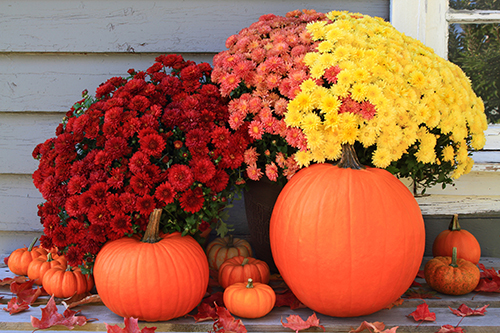 Plant retailers and nurseries might be among your best resources for determining what’s at its colourful peak right now. They tend to sell what’s in season, when it’s in season. And the warm, sunny days, cool nights, and more regular precipitation of early fall can be the perfect time to plant, offering ideal conditions for new plants, trees, and shrubs to take root before the first frost.
Plant retailers and nurseries might be among your best resources for determining what’s at its colourful peak right now. They tend to sell what’s in season, when it’s in season. And the warm, sunny days, cool nights, and more regular precipitation of early fall can be the perfect time to plant, offering ideal conditions for new plants, trees, and shrubs to take root before the first frost.
A few selections that fare well in our region in the fall include:
- Burning Bush (Euonymus alatas) – normally green deciduous foliage turns vibrant red
- Wayfaring Tree (Vibunum Lantana)
- Sugar Maple (Acer Saccharum) – foliage turns orange and red
- Mountain Ash (Sorbus) – foliage turns orange, red, and yellow
- Witch Hazel (Hamamelis) – foliage turns bright yellow
- Butterfly Bush (Buddleia) – flowers in fall, showing purple, blue, pink, and white
- Chrysanthemum (C. x morifolium) – fall flowers in yellow, orange, purple, red, burgundy, white, and bronze
- Purple Coneflower (Echinacea Purpurea) – large purple flowers and prominent seed heads
- Coralbells (Heuchera) – flowers throughout the season, leaves can show purple/bronze
- Rosemallow (Hibiscus Moscheutos) – large, saucer-like blooms are pink, blue, or purple
- Sedum Autumn Joy (Sedum spectabile) – flower clusters are generally pink or light purple
- Goldenrod (Solidago spp.) – bright yellow, flower clusters
Keep in mind though, that your plants and trees need a bit of TLC in order to get established before the first frost. Otherwise your investment of time and money may be for naught. If you’re not getting ample rainfall, you should water new plants thoroughly and consistently to help roots get established before the ground freezes. And ensure you get everything into the ground before the snow flies, as plants will have a much better chance of surviving the winter there than in the thin, plastic pots in which they’re generally sold.
 Once plants are in the ground, most of the initial growth is going to take place below the soil, which is good. So, don’t be disappointed if you see much going on above ground. Your patience will be rewarded with healthy, showy plants next year. To help things along and protect vulnerable young root systems, add a thick layer (4 inches) of mulch around plants. Mulch will add much needed insulation to keep heat in and cold out.
Once plants are in the ground, most of the initial growth is going to take place below the soil, which is good. So, don’t be disappointed if you see much going on above ground. Your patience will be rewarded with healthy, showy plants next year. To help things along and protect vulnerable young root systems, add a thick layer (4 inches) of mulch around plants. Mulch will add much needed insulation to keep heat in and cold out.
Although fall is a great time for planting, there are some exceptions. Evergreens need more time to adjust and build up stores of moisture. If not, they may dry out over the winter when the ground is hard and water supply is cut off. Also, some plants and shrubs sustain a bit of damage throughout the winter. A newly planted specimen may not be sufficiently established to handle the first winter, and may not make it through.
And finally, if you’re wanting to press your luck by planting something that is not ideally suited to your hardiness zone (Southwestern Ontario ranges anywhere from Zone 5 to 7), it will have a much better chance of surviving our winters if planted in spring and given a full growing season to acclimate.
Although many homeowners will start putting their gardens to bed for the year, plants are still growing and thriving in the early to mid-fall conditions. Take advantage of this time to change up your gardens, adding splashes of fall colour not just for this year, but for years to come.
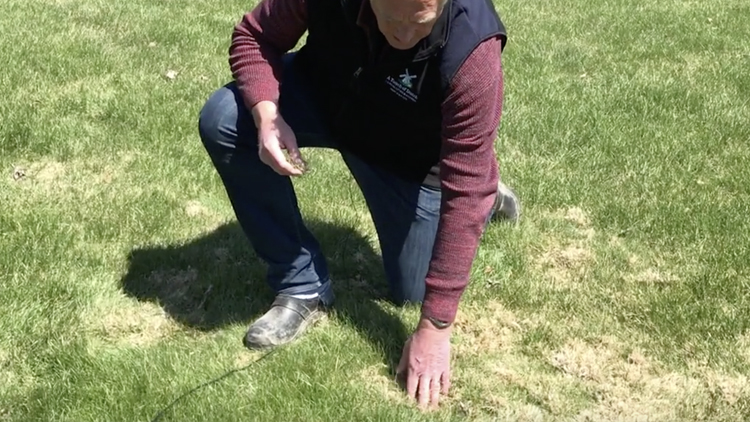

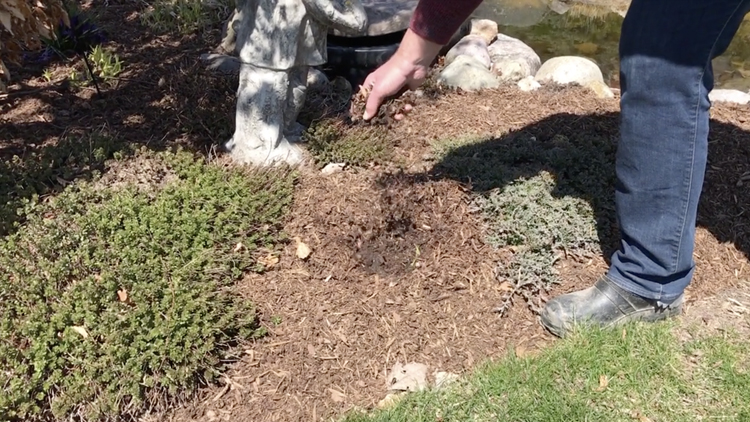


 It’s all well and good to provide seed and suet for birds, but the solution to population decline requires us to look a little closer. Instead of thinking short-term, say season by season, let’s look at it from a yearly perspective, or even longer.
It’s all well and good to provide seed and suet for birds, but the solution to population decline requires us to look a little closer. Instead of thinking short-term, say season by season, let’s look at it from a yearly perspective, or even longer. Wildlife Ecologist Doug Tallamy, author of “
Wildlife Ecologist Doug Tallamy, author of “ The good news is this isn’t an all-or-nothing proposition. You don’t have to swap out all of the plant life in your garden and risk disrupting your current modern or tropical motif, for example.
The good news is this isn’t an all-or-nothing proposition. You don’t have to swap out all of the plant life in your garden and risk disrupting your current modern or tropical motif, for example. 
 While the trees, plants, and shrubs throughout Southwestern Ontario offer up a lot of colour, many homeowners want colour in their own yards, as well. There are some quick fixes for this – displaying pumpkins, potted mums, and faux leaves and floral décor, for example. However, adding perennial colour to your fall garden takes a bit more forethought.
While the trees, plants, and shrubs throughout Southwestern Ontario offer up a lot of colour, many homeowners want colour in their own yards, as well. There are some quick fixes for this – displaying pumpkins, potted mums, and faux leaves and floral décor, for example. However, adding perennial colour to your fall garden takes a bit more forethought. Plant retailers and nurseries might be among your best resources for determining what’s at its colourful peak right now. They tend to sell what’s in season, when it’s in season. And the warm, sunny days, cool nights, and more regular precipitation of early fall can be the perfect time to plant, offering ideal conditions for new plants, trees, and shrubs to take root before the first frost.
Plant retailers and nurseries might be among your best resources for determining what’s at its colourful peak right now. They tend to sell what’s in season, when it’s in season. And the warm, sunny days, cool nights, and more regular precipitation of early fall can be the perfect time to plant, offering ideal conditions for new plants, trees, and shrubs to take root before the first frost. Once plants are in the ground, most of the initial growth is going to take place below the soil, which is good. So, don’t be disappointed if you see much going on above ground. Your patience will be rewarded with healthy, showy plants next year. To help things along and protect vulnerable young root systems, add a thick layer (4 inches) of mulch around plants. Mulch will add much needed insulation to keep heat in and cold out.
Once plants are in the ground, most of the initial growth is going to take place below the soil, which is good. So, don’t be disappointed if you see much going on above ground. Your patience will be rewarded with healthy, showy plants next year. To help things along and protect vulnerable young root systems, add a thick layer (4 inches) of mulch around plants. Mulch will add much needed insulation to keep heat in and cold out.